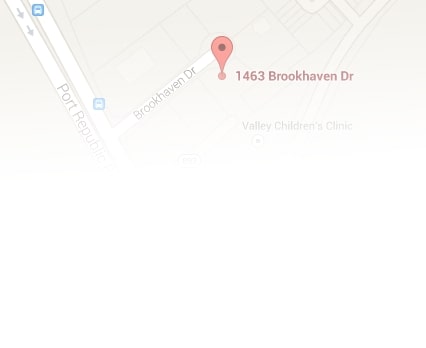Accidents Caused by Broken Down Tractor Trailers
Tractor trailer drivers who have a commercial drivers license are taught that stopping a large commercial truck on a roadway or on the shoulder of a road creates an extremely dangerous situation. For that reason, truck drivers should avoid pulling a truck over and stopping it near lanes of travel unless it is absolutely necessary.
There are many reasons for having strict rules against allowing trucks and tractor trailers to be parked near lanes of travel. Among them, there can be a “moth effect,” which causes drivers who are coming upon a stopped tractor trailer to be drawn toward the stopped truck, even crashing into it. Also, because of the sheer enormous size of tractor trailers, a stopped tractor trailer will likely have portions of the vehicle that will reach into travel lanes.
There is even a term in the industry for trucks and tractor trailers that are stopped on or near lanes of travel. These trucks that are not safely parked are called “sitting ducks.” That is because these trucks and trailers and sitting there and waiting to be hit.
These or similar situations can lead to deadly but preventable collisions.
One particularly dangerous situation is when a truck is parked on the side of the road while the driver is sleeping. In this situation, the reason for the truck being stopped are not because of an emergency. Instead, the driver made the dangerous choice to park in an unsafe manner, and that placed the truck and trailer in an extremely unsafe place.
It may be the case that an emergency occurs and a truck driver faces an emergency and must stopped their truck on the side of the road. Truck drivers who must stop on a roadway must follow a number of rules to maximize safety and ensure they minimize the possibility of causing an accident. Some of the most important safety rules include:
- Making their presence known. If a trucker must pull to the side of a road, federal regulations and industry safety standards require the truck driver to turn on their four-way emergency flashers. Also, it is critically important that truck drivers take immediate steps to place warnings devices, such as flares, cones, or bright signs that alert oncoming traffic that the truck is pulled over. The warning devices and signs need to be placed far enough away from the stopped truck and in certain intervals that drivers have an opportunity to both see the warnings and react by slowing their speed, stopping, or taking other measures appropriate for the situation. Federal law requires drivers to place adequate warning signs and devices a very short time following a breakdown.
- Proper placement of warning signs. It is not enough for truck drivers and trucking companies just to put warning signs out, they must also put the signs a proper distance from the truck and in a proper alignment to the truck and each other to make sure an adequate warning is created. As far as distance is concerned, tractor trailer drivers generally need to place the warning signs 10 feet behind the truck, 100 feet behind the truck, and 200 feet away. But this is just a general rule, as the road configuration may require different or additional signs depending on how the road is laid out, where the truck is situated in relation to certain obstacles, and other facts. In addition, the signs must be set up so that they direct traffic away from the disabled truck, not toward the truck.
- Stopping in a safe place. Truck drivers should avoid stopping in any area that prevents other drivers from seeing the stropped truck from 500 feet away. That means that the tractor trailer should be stopped far enough from a hill or curve that oncoming drivers can clearly see the truck. In the event the terrain does not provide 500 feet of clearance, the truck driver must move the warning signs and devices far enough down the road that a fair warning is provided to other drivers 500 feet before the accident.
- Using the horn when necessary. At times, a driver may find that it is necessary to use the truck’s horn. This is especially important when visual cues about the truck are blocked for various reasons.
- Making the truck as visible as possible. It may be the case that the tractor trailer needs to stop at night, in bad weather conditions, or in other circumstances that limits visibility of the truck. When that happens, drivers should take steps necessary to make their truck as visible as possible. They can do this by turning on the lights, using flares, and using other available methods.
Following these basic safety rules will best ensure that commercial trucks that are forced to stop minimizes the chance of an accident caused by broken down tractor trailers.
Although these rules are basic, they are not always followed. And when they aren’t followed, serious injuries and death can occur.
Cases are unfortunately common where a disabled truck causes a disastrous and deadly crash because the driver did not put out the required warnings. Or, trucks are stopped in a location that is not reasonably safe, causing oncoming vehicles to not be able to see it. Crashes that occur can be particularly harmful because an oncoming passenger vehicle may experience what is known as an “underride” crash. An underride crash occurs when a car goes under, or partially under, the trailer that is stopped. Those underride crashes can be terrible, and can lead to deadly crashes.
If you or a loved one were injured due to a truck driver or a trucking company’s failure to follow these rules, you may have the right to receive compensation for your injuries.
For a legal consultation with a personal injury lawyer, call (434) 817-3100
For a free, no-obligation consultation with an experienced Virginia truck accident lawyer, please contact Robert E. Byrne, Jr. Bob is Virginia’s first and only Board Certified attorney in Truck Accident Law. You will not owe a fee unless you get a recovery.
Call (434) 817-3100 or complete a Case Evaluation form




